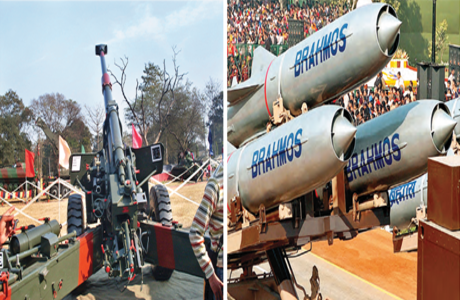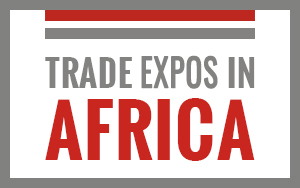The current Government of India (GoI), which is now in its third year of governance, has set a target of exporting Indian defence goods worth USD 200 million by the time its tenure ends. This means a six-fold increase over the current level of India’s defence exports, which have risen from INR 11.53 billion (USD 179 million) in financial year (FY) 2013-14 to INR 20.59 billion (USD 319 million) in FY 2015-16.
Interestingly enough, the increase that the Indian defence has seen in exports happened despite two-thirds of its items being removed from the military goods list. India now has bridging equipment, missiles, warships, Off-Shore Patrol Vessels (OPVs) and Self Propelled Artillery Guns (SP Guns) on its list of export items.
Indian-made OPVs are already guarding Mauritian waters and it is in the process of finalising sale of warships to Vietnam, which has also shown keen interest in buying the BrahMos, the supersonic cruise missile from India. Other than Vietnam, the countries looking at India for exports in defence equipment include Mauritius, Bangladesh, Philippines, Afghanistan and Oman. The United Kingdom (UK) is also looking at developing its defence technology in India for joint exports from India, thus also using the Indian talent and boosting the Indian government’s ‘Make in India’ initiative. Furthermore, India and Spain too have decided to widen their defence partnership.
Most recently, exchanges between India and the United Arab Emirates (UAE) came to the forefront when India showed interest in assisting the latter in developing its air defence system and repairing defence equipment to enhance its life cycle, besides providing offshore patrol vehicles, as the Gulf nation hopes to expand ties beyond its traditional partner Pakistan.
“Air defence is an area where India can assist the UAE given the new found expertise that India is building on,” Ananta Centre, a leading Indian public policy forum said in a comprehensive report on India-UAE ties.
T
he increase in Indian exports has also been pushed by increased production of the Ordnance Factories Board (OFB) and the Defence Public Sector Units (DPSUs). In the last two years, productions in the OFB and DPSUs have shot up by over 25 pc.
It is impressive to watch India’s progress and see how far it has come after its debut in the world defence market with the export of Indian Small Arms System (INSAS) assault rifles to Oman and Nepal. Although this first deal had its share of loopholes and drawbacks, India has outperformed itself in terms of both manufacturing and managing its weapons and their exports.
Managing exports
Proper governance is required when it comes to exports so as to avoid situations of misuse of power. For instance, if an exported item from India to one country was to be sold further to another country without the knowledge of Indian authorities – such re-selling could also cause backlash against India if not properly governed. Thus, in order to better monitor the usage of exports from India, the MoD is now controlling the issuance of No-Objection Certificate (NOC) and end-user certificates.
Now, no NOC is required for dualuse items. Diluting their requirements and making their issuance time-bound also boosted the issuance of NOCs to 191 in FY 2015-16 from only 39 NOCs that were issued in FY 2013-14.
The amendments made in the issuance of end-user certificates have erased the need of a foreign ministry’s counter signature while dealing with an importer. The regulations earlier demanded signatures from both, the party directly being dealt with and the government. The procedure that ensured a product or component is not further exported to another party was a healthy one but was seen to be cumbersome. The MoD thus changed the rule, so that only certain critical items, which use sensitive Indian technology, need the foreign government’s countersignature.
Internally, the DPSUs, which are burdened with domestic orders, have been given a 10 pc dispensation for exports. Exports from DPSUs were earlier not permitted unless the domestic demand of armed forces had been fully met. This is meant to create a foothold in foreign markets, leading to supply of spares and greater market dependencies. Indian private defence manufacturers are an important part of the plan, and they have now been added to official defence delegations to foreign countries. However, despite managing the export and even an item’s end usage, there remain governance gaps to be filled and shortcomings to be overcome.
Persisting challenges
Currently, Indian defence exports mainly consist of personal protective equipment, offshore patrol vessels, and spares for helicopters and radars, making it difficult to establish a pattern about target countries or the type of exports thus inhibiting the crafting of a viable export strategy. The gap in approaching the potential buyers thus remains a challenge and hindrance in meeting the target of USD 2 billion exports.
Other challenges prevail as well, but they are more fundamental in nature. India is not high up on the charts as a defence manufacturer. The proven military platforms that are ‘Made in India’, such as the Su30 fighter or the T90 tank, are licensed productions with Intellectual Property Rights (IPR) held by foreign defence firms. India cannot export these. Even in the case of the BrahMos missile, which has been jointly built by India and Russia, the approval of the BrahMos board is required for its export.
That leaves India only with the indigenous Indian military platforms for export; the Akash missile, in which Vietnam and Thailand have shown interest in the past, is one such platform. However for indigenous military platform to become attractive to a foreign buyer, it will have to be tested and inducted into the Indian armed forces, and its operational performance displayed. The artillery guns being produced now, whether the Dhanush howitzer or Advanced Towed Artillery Gun System, will thus be available for export only a few years down the line.
Also, the military platforms in service in India are not to be exported to Indian neighbours. Of course the software codes for export platforms are different from the ones in use by Indian armed forces, this is to prevent the possibility of the leak of sensitive information about critical equipment.
However, one of the biggest challenges for defence exports remains the political leadership. To sell 36 Rafale fighters to India, the French defence minister made more than a dozen visits to India. Every American official visiting New Delhi reminds Indian officials of their interest in selling the F-16 or F-18 fighters, as does every German official about their keenness to build submarines in India. Although India is considering the proposal to manufacture the F-16 fighter jets given that the manufacturing base will be in India, it appears unlikely that Indian defence authorities would be able to provide the required escalation to exports.








Add Comment